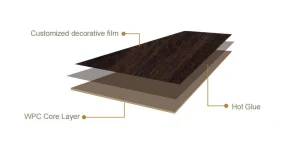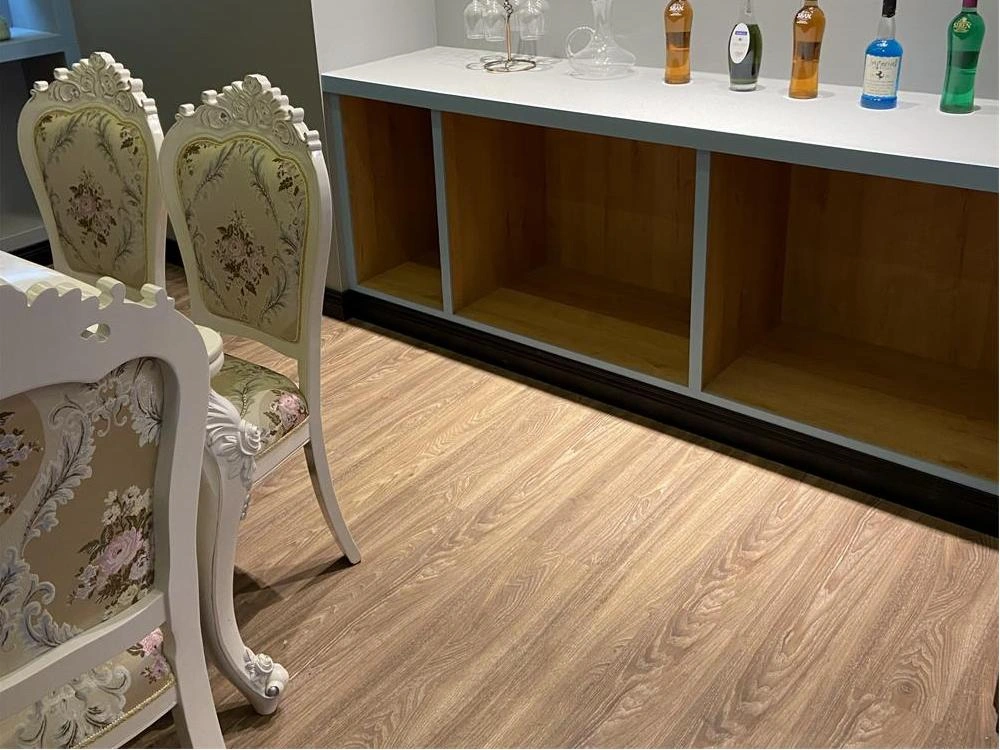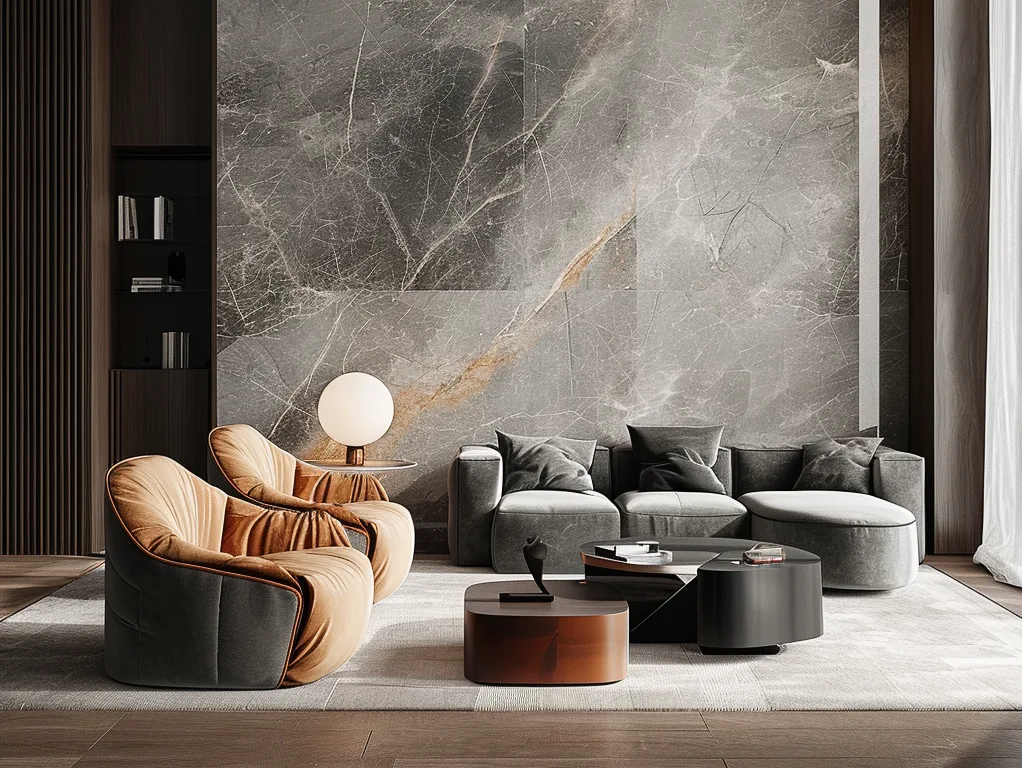Overview of WPC Wall Panels
Definition and Composition
Wood-Plastic Composite Wall Panels or WPC Wall Panels are an exceptional new material derived from combining the best characteristics of wood and plastic. The construction of these panels is essentially a three-layer, customized decorative film, WPC core layer, and hot glue. The aesthetic aspect is provided by means of a decorative film which can be made in different versions, such as imitation natural wood. The WPC core layer is the heart of the panel, which consists of Wood Fibers and High-Density Polyethylene (HDPE), making it strong and durable. Layers are glued together with hot glue to create a strong, solid unit.
Environmental Benefits
Another reason why WPC Wall Panels are widely popular is because of their environmental advantages. They help to reduce waste and save forest resources, being 100% recyclable. With the use of wood fibers from renewable sources and waste plastics, WPC panels support green building. In addition, they also have a long life, and in this way, we do not resort to changing them once in a while, which is also bad for the environment.
Distinctive Features of WPC Wall Panels
Structural Integrity
One of the greatest benefits of WPC Wall Panels is the way they are built. The wood fibers, combined with the HDPE, produce a sturdy, high-strength material. The combination makes WPC panels highly resistant to abrasion and thus, suitable for applications such as outdoor facades and garden products. They are stable against harsh climates—from -30°C to 60°C—and hence they are a reliable building product as well.
Safety and Aesthetic Qualities
Apart from being visually appealing, WPC wall panels are safe in other aspects too. They have been made to be barefoot-friendly with anti-slip surfaces to be safe on residential and commercial premises. Edited Image Download In addition, the panels are also harder to crack, making them safer by not having sharp edges or splinters! That makes them safe to work with, and they cannot be readily cracked which leaves no sharp edge or splinters.
In terms of sight, these panels replicate the natural look of fine timber species without all the downsides of real wood. They come in an extensive array of colors and designs, providing dynamic design alternatives that may match any architectural fashion. Additionally, WPC panels do not need to be painted or treated further after installation, so they do not lose color or UV stability on exposure to the elements.
Applications of WPC Wall Panels in Various Projects
Small Scale Projects
WPC Wall Panels have been a great option when it comes to small-scale projects. Residential — Wall Accents: The ability to create a wall accent facilitates a neat and refined aesthetic alternative to traditional wood paneling while avoiding any related hassles. Moreover, WPC panels can also be used for any sort of renovation work in bathrooms and kitchens since they are water-resistant and easy to clean. Lightweight enough to be handy for DIY, transforming a room for homeowners has never been so convenient
Large Scale Projects
WPC Wall Panels not only look good but are also beneficial for all large-scale projects, such as commercial buildings or public places. For use in exterior facades, these panels provide a weather-resistant and durable solution to withstand extreme environmental conditions. With high UV stability, they will retain their color and finish in the long run, and make a great option for outdoor use. Also, due to their flame-retardant qualities, they are safe for public construction and fulfill strict building codes/regulations.
Exploring Latitude: A Leading Provider of Wall Panels
Material Durability and Quality Assurance
Latitude WPC Wall Panel is recognized for its highly durable materials and assurance of quality. Latitude complies with international quality standards ISO9001 and CE certifications that turn Latitude wall panels into a quality mark. With such cutting-edge techniques of fabrication, the products produced by the company are not only durable but also offer consistent performance irrespective of their use. It is this attention to detail that has made Latitude a respected industry leader.
Comprehensive Product Range
Latitude has a diverse range of WPC products, including WPC flooring and WPC tiles. These plymax products are made up of the same features as WPC wall panels: strength, low maintenance, and eco-friendliness. Designed to be used both indoors and outdoors, Latitude’s WPC products are ideal for modern construction solutions. Designed for modern-day application areas, Latitude’s WPC range of products offers high-performance solutions for indoor and outdoor use.
To sum up, WPC Wall Panels successfully include all the essential elements and are a high-performance-oriented, environmentally friendly, and labor-friendly building material. Featuring handles aesthetics and structural requirements, uniqueness in composition makes them ideal for sustainable construction around the globe. With their unique composition, perform scrambling to the aesthetic and the structural requirements are met while promoting sustainable building practices around the world.
Rich Customized Services
What sets out Latitude is its depth of customized services, providing tailored solutions based on the exact requirements of particular projects. They are available in various colors and textures as well as different finishes to give clients an aesthetic effect. With the bespoke designs that Latitude, architects, and designers can let their creativity take the wheel while ensuring practicality with the material specialty and the functional improved efficiency of WPC.
To conclude, WPC Wall Panels have become an option for numerous construction projects due to their exceptional combination of strength, beauty, and sustainability. Indeed with providers such as Latitude providing a full menu of products and custom services, these panels are likely only to become more a part of architectural and design practice around the world.










